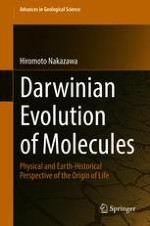2018 | OriginalPaper | Chapter
2. Why Did Life Generate? Why Does Life Evolve? Physical Perspective of the Origin of Life
Author : Hiromoto Nakazawa
Published in: Darwinian Evolution of Molecules
Publisher: Springer Singapore
Activate our intelligent search to find suitable subject content or patents.
Select sections of text to find matching patents with Artificial Intelligence. powered by
Select sections of text to find additional relevant content using AI-assisted search. powered by
